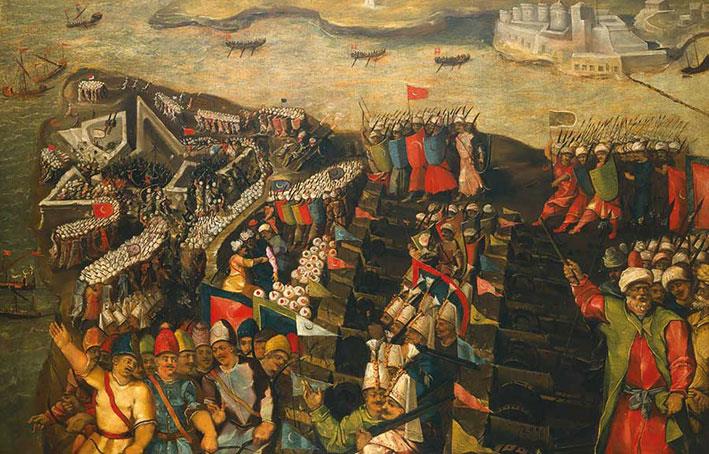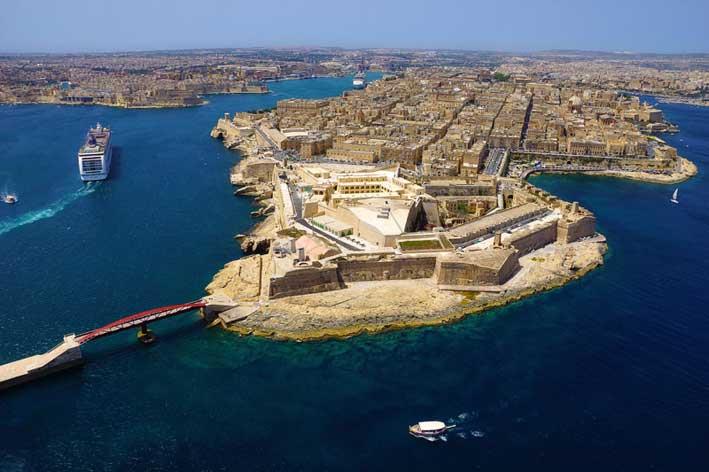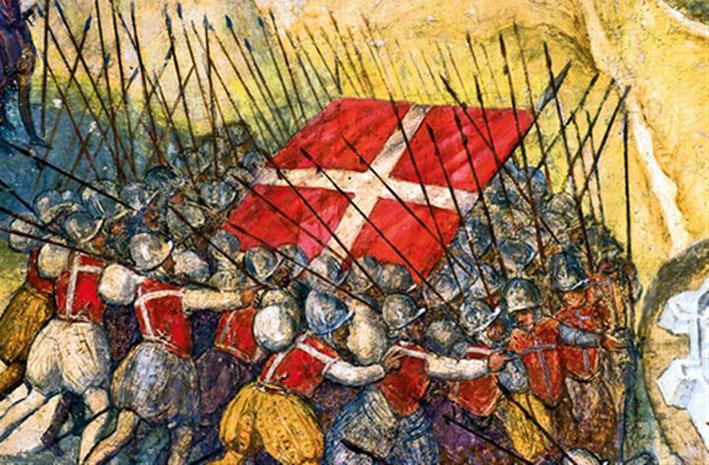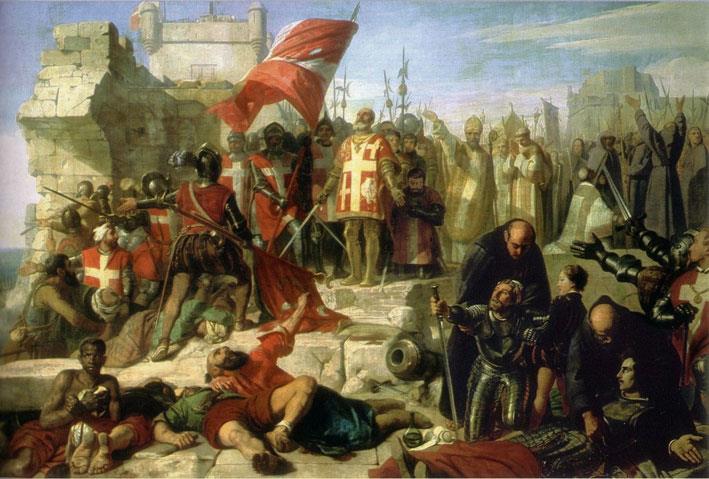Known in Malta as ‘Victory Day’, 8 September is a day that commemorates two major military victories that were key moments in Malta’s long and conflict-ridden history. Despite being 500 years apart, these historical events share two common features: the resilience of the Maltese people and their resultant victory against all the odds. The Malta Independent on Sunday will be featuring both these key moments in Maltese history, starting with this edition.
As the Knights of the Order of St John, and the Maltese inhabitants, looked on at the 200 or so Turkish ships landing on the island’s shores, there must have been a sense of trepidation in the air: a sense that the coming weeks and months would have a bearing on the course of the history of the Order, of Malta and maybe even of Christianity as a whole. As it happened, today the summer months of 1565 constitute one of the most iconic moments of Maltese history.
The Great Siege is a military campaign that is legendary in Maltese history and culture. The story of how around 10,000 Knights and Maltese fought off a force of 30-40,000 Ottoman Turks is one that has been told time and time again.
In the mid-1500s, the Ottoman Empire was reaching its zenith. Under the reign of Sultan Suleiman the Magnificent, the Turks had spread their reach far into Europe, North Africa and the Mediterranean. They captured the island of Djerba in 1560 and, with the Knights wreaking havoc on the Ottoman fleet, it was inevitable that Malta would be the next target for invasion.

The Ottomans arrived within eyeshot of Malta on 18 May 1565, landing a day later in Marsaxlokk Bay. They then moved up to Mount Sciberras and began to attack Fort St Elmo. The idea behind this decision was that they could then move their fleet into Marsamxett harbour, where it would be sheltered. In the end, attacking Fort St Elmo proved to be a crucial mistake.
The bombardment began on 27 May, and on 3 June the Turks seized the ravelin and the ditch surrounding the fort. By 8 June, the Knights inside the fort communicated to the Grandmaster of the Order, Jean Parisot de Valette, that holding the fort was becoming impossible, but they were rebuffed by de Valette who was waiting for reinforcements to come in from Sicily.
The Turks attacked the damaged walls on 10 June and again on 15 June, and then made an all-out assault on 16 June. In that assault, everyone – from the Knights down to the slaves – fought tooth and nail to defend the fort, managing to beat back the Turks.
Two days later, Dragut – who had taken over command of the force – was seen at an artillery post arguing about the firing level of a gun. He was insisting that the gun should be aimed lower down, but when the gun was lowered and fired, a part of the trench it was in collapsed and Dragut was killed by the falling debris.
This was a huge blow for the Turks but, nonetheless, Fort St Elmo finally fell to them on 23 June. The bodies of the Knights were reportedly decapitated and floated across the bay on mock crucifixes. In response, de Valette is said to have beheaded all his Turkish prisoners, loaded their heads into his cannons and fired them into the Turkish camp.

With St Elmo now in Turkish hands, part of the fleet docked in Marsamxett, and the invasion force moved to the Senglea peninsula.
The first attack came on 15 July, with the invaders attacking both from sea and from land. De Valette had, however, been informed of this by a defector, and a palisade had been hastily constructed under Senglea to make the entry of troops by sea even harder. The attack was, however, foiled when Turkish boats came into the range of a cannon battery on Fort St Angelo in Birgu. Two cannon salvos sank all but one of the invading boats, killing or drowning around 800 troops. Reinforcements also arrived at the scene in Fort St Michael via a floating bridge to help eventually beat back the Turks.
The invaders surrounded Fort St Michael and Birgu and subjected them to an intense bombardment until, on 7 August, another fierce assault came through the crumbling ramparts. The city’s walls had been breached and for a moment it seemed as if the Turks had entered the city and won the siege. Then, however, they inexplicably retreated.
It transpired that one Captain Vincenzo Anastagi was leading his cavalry detachment on a routine patrol when he came across the Turkish field camp, unprotected. The cavalry ran riot, killing almost everyone in the camp. When news of this reached the Turkish troops on the frontline, they thought that the long-awaited Sicilian reinforcements had arrived, and therefore made their retreat.

The bombardment continued, and another huge assault was made on the city between 19 and 21 August. It is not entirely clear what happened in those days, but in his book entitled The Great Siege Malta 1565, published in 1962, Ernle Bradford writes that the assault began with the detonation of a huge mine under the walls. Both Bradford and the diary of soldier Francesco Balbi then chronicle how the 70-year-old Grand Master de Valette himself led his troops’ defence. This proved to be the shot in the arm that the Knights needed, and the Turks were beaten off once again.
Minor assaults continued, but September was starting to set in, and with it the Maltese weather was starting to turn. The Turks had lost over a third of their initial force to fighting and disease, and the remaining soldiers had seemingly lost the will to fight.
A march on Mdina, the then capital of Malta, was ordered, with the intention of spending the winter there. Mdina was weak and severely under-supplied, but the defenders played a bluff and fired their cannons at the Turks whilst they were still out of range. The bluff however worked – with the Turks thinking that the fortress city had ammunition to spare and, as a result, the planned assault did not take place.
The Turks had begun their retreat from the island. It was then on 7 September that the much awaited reinforcements landed from Sicily. At long last, 8,000 men landed in Malta under the command of Don Garcia. It is said that the Knights in the group, seeing the Turks setting fire to the villages through which they passed, charged of their own accord. This forced the Commander of the force, Ascanio Della Corgna, to call a general charge. The Grande Soccorso, as it was known, massacred the retreating Turks.

By 8 September, all the Turkish artillery had been loaded onto their ships. Victory was declared by the Order of St John and the Day of Victory has been commemorated ever since.
What about the aftermath of the siege? News of the victory was greeted worldwide. Voltaire later said that nothing was “better known than the Siege of Malta” when it came to the 16th century, and it was the last epic battle involving Crusader Knights like the Order f St John. It brought together Christian empires across Europe and a joint Christian force defeated the Ottomans at the huge Battle of Lepanto in 1574, essentially putting paid to an era when the Ottomans seemed to be all but invincible.
Meanwhile, Malta had lost a third of its population and Senglea, Birgu and Fort St Elmo had been basically levelled. However, funds poured in from Christians all over Europe and, on 28 March 1566, Grand Master de Valette laid the foundation stone of the city, on the site where now stands the church of Our Lady of Victories – the first church to be built in the new city. It was decided that the city would be named Valletta – after the Grand Master – but de Valette would never see the city completed: he died of a stroke on 21 August 1568.
Victory Day is commemorated in Malta for two major military victories – the Great Siege of 1565 being one of those. The second part of this feature will be published in The Malta Independent on Sunday on 8 September itself and will be about the second major military victory: World War II.